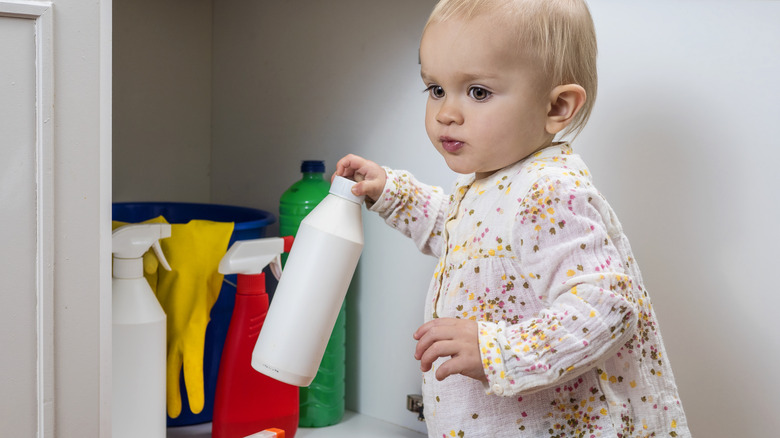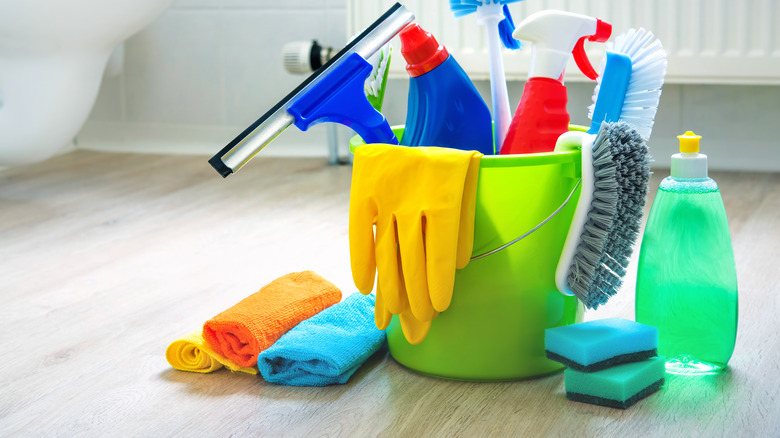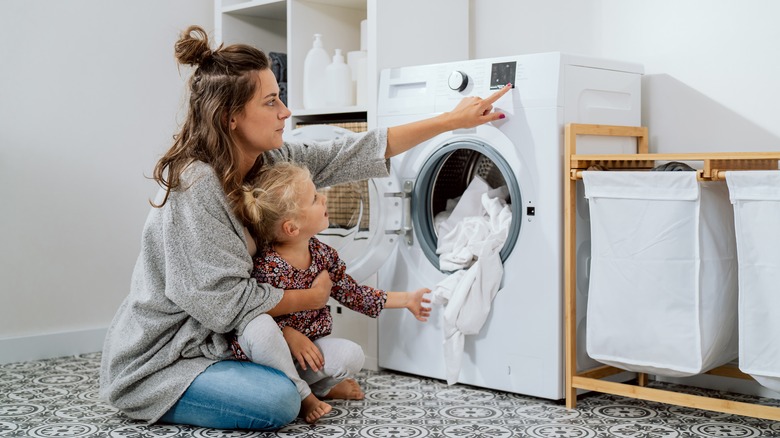Cleaning Ingredients You Should Use With Caution Around Children
Children are notorious for generating messes around the house (or anywhere else they go, for that matter), but the catch-22 faced by caretakers of young children is that preserving a clean living space is important to overall wellness. While keeping your home clean and tidy is necessary, certain cleaning products can pose a risk to children — especially younger ones — if used incorrectly.
Perhaps unsurprisingly, the age range that is most likely to suffer injuries from cleaning chemicals is 1 to 4 years old, according to a study conducted between 2012 and 2021. This is the age when children are old enough to get into trouble, but too young to know — or be expected to follow — basic safety procedures. One of the most heinous cleaning ingredients is bleach. While you are already aware of the clothes-staining potential of this chemical, bleach also holds the highest ranking for incidents with children. Direct skin contact with bleach can cause burns on anyone, and since children have particularly sensitive skin they are especially at risk of injury. Tread carefully when using this common household cleaning ingredient and remember to thoroughly rinse and wipe surfaces that have been cleaned with bleach to prevent your child from coming in direct contact with it.
More dangerous substances
Glass cleaner is another dangerous chemical to have in the same home as children. This product generally contains surfactants, as well as ammonia, which may produce noxious gasses, thus irritating airways. If ingested in small amounts, glass cleaner can be expected to cause stomach upset in children and may result in vomiting. As a minimum safety precaution, remember to always keep these and other cleaning product bottles in the locked position. This will help to keep the bathroom safe for your child by restricting them from coming in direct contact with the contents.
Other harmful chemical cleaning substances include toilet bowl cleaner and drain cleaner. Both are caustic and can lead to long-term health complications associated with the esophagus. If consumed, an individual may require a medical procedure in order to allow for proper breathing and swallowing in the future. If you ever believe that your child has ingested any amount of a cleaning chemical, call poison control immediately for guidance and next steps.
Final safety notes
While the aforementioned cleaning ingredients are perhaps the most alarming with children in the house, remember to always check ingredient lists and warning panels on whatever cleaning substances you use. For example, many cleaning products are formulated with bleach as an ingredient, although the front label may not specifically denote the chemical's presence. Vigilance is key.
Since little ones are naturally inclined to explore and push boundaries, exercising extreme caution when using cleaning products is paramount. Whenever not in use, cleaning substances — whether toxic or not — must be kept locked away or out of reach. Cabinet locks can be an invaluable asset to your child's safety and your peace of mind (fortunately, they are very affordable). If you want to play it as safe as possible, create an effective cleaning schedule and only use these substances when your children are sleeping or otherwise occupied. This approach will allow you to devote your attention to tackling messes, rather than trying to simultaneously play the roles of cleaning person and babysitter. Of course, laundry, sweeping, dusting, and other safe cleaning chores can easily be done with young children around — and are a great way to teach responsibility.


